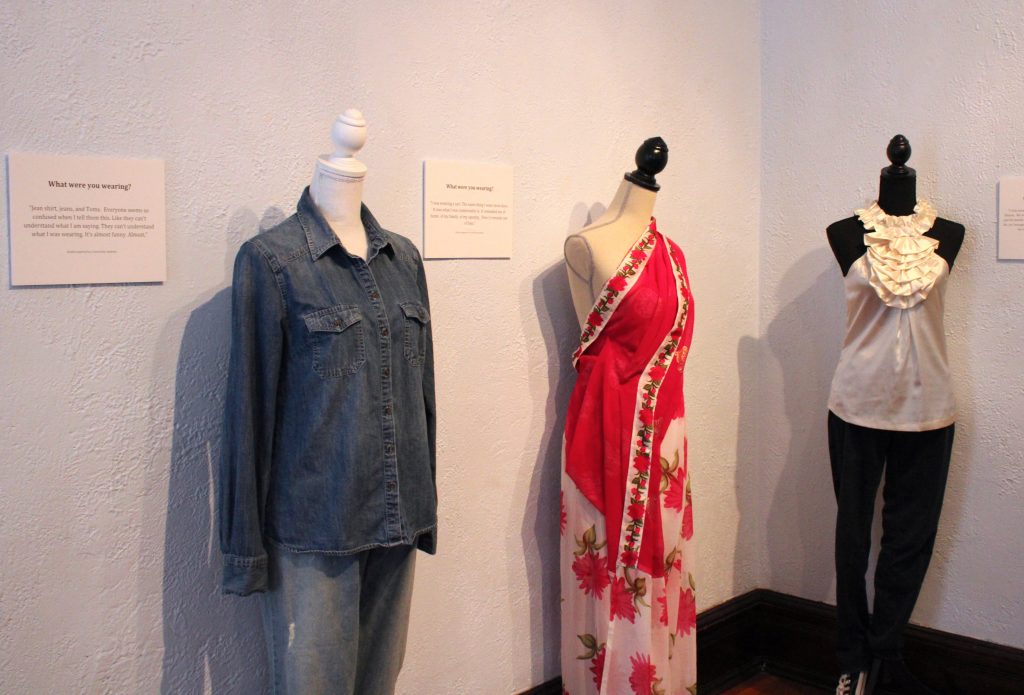The Bundy Museum of History and Art, in partnership with The Crime Victims Assistance Center and 20:1 Prevention Programs at Binghamton University, presents “What Were You Wearing?”, a traveling art exhibition created in an effort to end sexual violence. The exhibition originally premiered in March, at The Bundy Museum of History and Art’s Gallery, located at 131 Main St and has been extended until Sept. 30.
Upon first glance, there’s a prom dress, swim trunks, a cheerleading uniform and a men’s T-shirt with pants hanging from the wall, among many other pieces. But what may seem like a random collection of clothes holds a much deeper meaning. Each piece of clothing has a place card hanging next to it which divulges the details of the sexual assaults that were used as inspiration to recreate the outfits. One card states “My prom dress. Don’t know if that needs much more explanation.” Another states “I missed a couple of days’ work after it happened. When I told my boss she asked me this question. I said ‘A T-shirt and jeans bitch, what do you wear to a baseball game?’ I walked out and never came back.” The “What Were You Wearing?” exhibit, can only be described as thought-provoking, intense and empowering.
The exhibition first premiered at the University of Arkansas in 2013, created by Jen Brockman and Dr. Mary Wyandt-Hiebert. The exhibition has subsequently visited dozens of college campuses and cities across the country since 2014. “What Were You Wearing?” was inspired by a poem written by Mary Simmerling called “What I was Wearing”. The poem is about what Simmerling was wearing when she was assaulted. Moreover, the poem addresses the countless times she was asked what she was wearing, but no one ever asked what her rapist was wearing. The exhibition and poem were created in an effort to end the “What were you wearing?” question many survivors are asked, an example of victim-blaming. The exhibit promotes discussions between communities regarding sexual assault, victim-blaming and rape culture, specifically on college campuses.
The exhibition challenges the viewer to think about their own biases regarding society’s idea that sexual assault and clothing are related. Viewers are able to see that a little girl’s dress, or a button-down shirt or a prom dress have absolutely nothing to do with sexual violence. As the viewer goes further and further into the exhibition, it becomes clearer that these societal ideas perpetuate rape culture, which only hurts survivors. It also becomes clearer that disposing of the clothing a survivor was wearing does not eliminate the experience or the pain of the survivor’s experience. As Simmerling said in her poem, “I remember also / what he was wearing / that night / even though / it’s true / that no one / has ever asked.”
If you or someone you know has been a victim of sexual violence, please reach out to The Crime Victims Assistance Center at (607)-722-4256, located on 377 Robinson St. Binghamton, New York.



